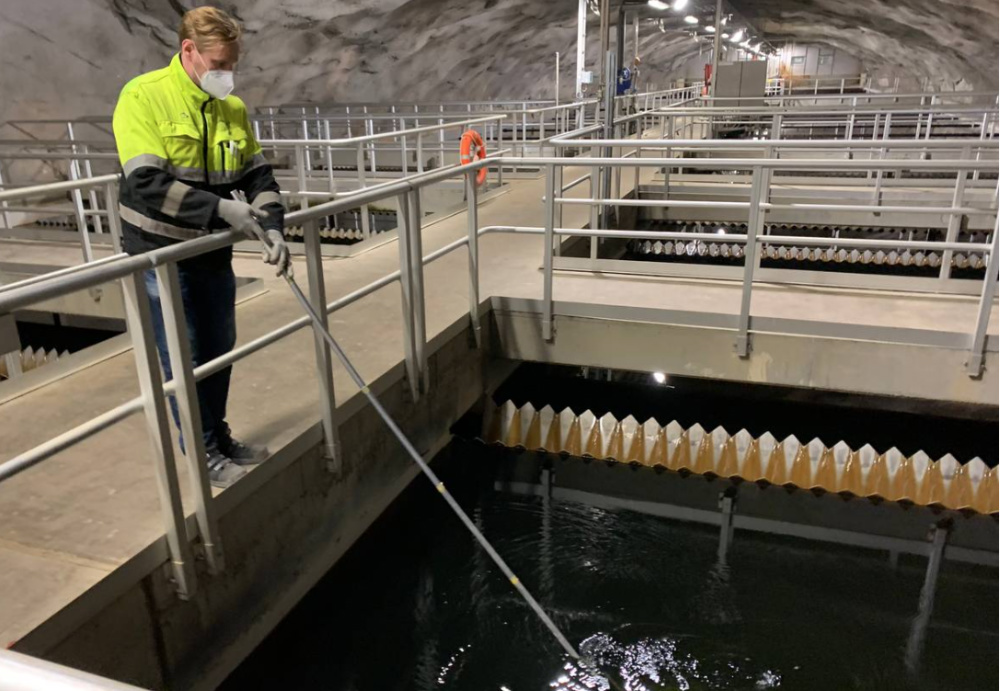
ALISTER DOYLE, of Thomson Reuters Foundation, reports on how Turku, Finland’s oldest city, has slashed emissions by more than half and is now looking to heat from sewage to get to net zero…
Turku, Finland
Thomson Reuters Foundation
Famed for its medieval castle and lofty cathedral, Finland’s oldest city is winning admirers for a less likely attraction as it strives to be one of the world’s first carbon neutral cities by 2029 – a sewage treatment plant.
The underground plant, located in a cavern beneath the Baltic Sea city of Turku, uses large industrial heat pumps to extract energy from waste flowing from the city’s drains and sewers.

Worker Jarkko Laanti checks the water quality at the underground Kakola wastewater treatment plant in Turku, Finland, on 25th April, 2022. PICTURE: Thomson Reuters Foundation/Alister Doyle.
With urban areas accounting for 70 per cent of the global greenhouse gas emissions that drive climate change, according to a UN panel of climate scientists, such innovative technology may be one path to slow warming.
It can also save money spent on fossil fuels – a growing concern in Europe as Russia’s invasion of Ukraine disrupts natural gas supplies and hikes prices.
“Money smells, you know.”
– Turku Mayor Minna Arve, speaking of earnings from the Kakolanmaki wastewater plant.
“Money smells, you know,” Turku Mayor Minna Arve said of earnings from the Kakolanmaki wastewater plant, which has undergone several upgrades since opening in 2009. Officials from as far off as China have visited to learn about its technology.
Sewage sludge, extracted from foul-smelling treatment pools, is also trucked from the plant to an industrial facility to produce biogas, a replacement for natural gas.
Heat extracted from the wastewater is just a small part of the city’s drive to phase out fossil fuels in favour of renewables including hydropower, wood pellets and wind.
Arve said the 130-million-euro wastewater plant was her favourite example of how the city is harnessing previously untapped energy and boosting recycling to get on track for carbon neutrality to mark the city’s 800th anniversary seven years from now.
Kakolanmaki generates enough hot water to heat homes for 12,000 people.
It produces almost 10 times more energy than it consumes, and has halved its annual carbon dioxide emissions since 2017 to 10,000 tonnes, said Jarkko Laanti, a manager at Turun seudun puhdistamo Oy, the company that runs the plant.
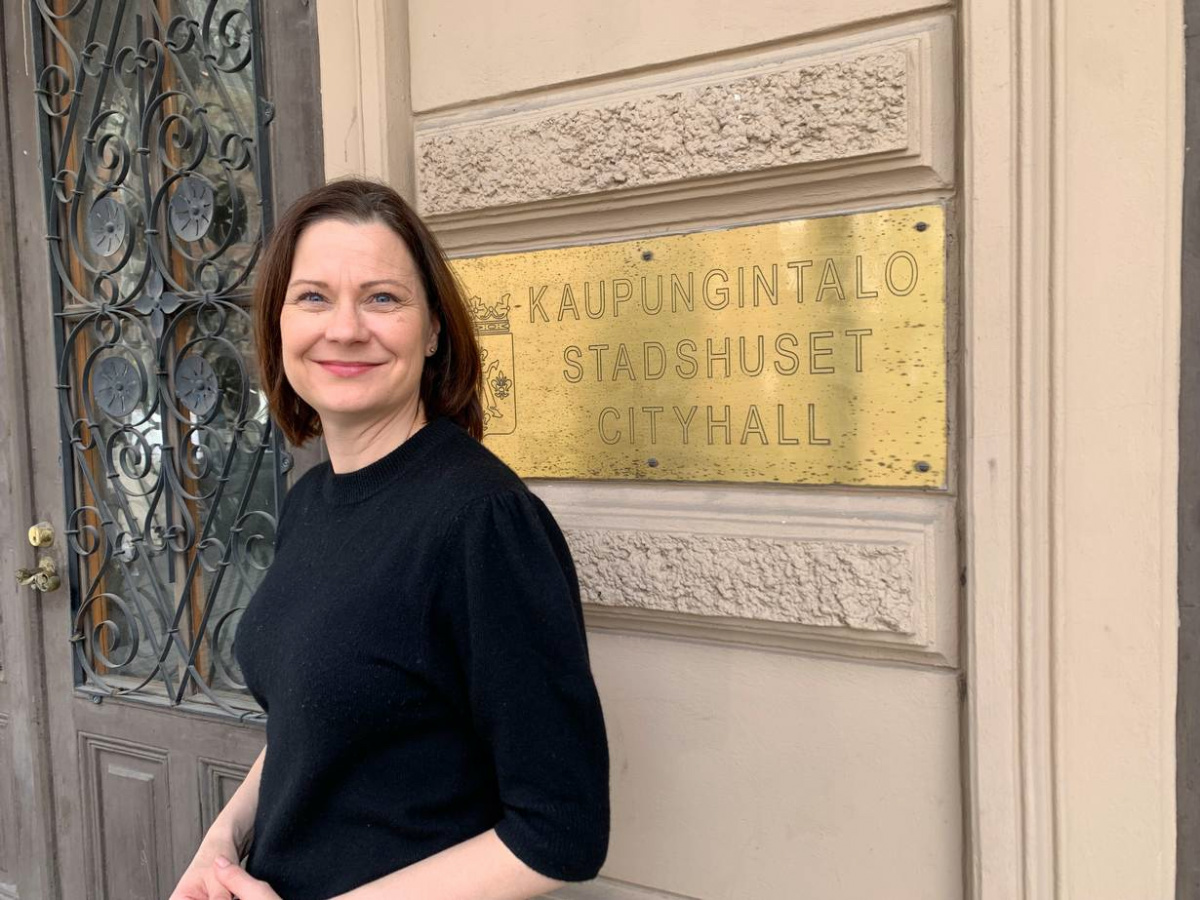
Minna Arve, mayor of the Finnish city of Turku, says the municipality is on track for carbon neutrality by a target date of 2029, on 26th April, 2022. PICTURE: Thomson Reuters Foundation/Alister Doyle
Turku, Finland’s oldest city and home to 200,000 people, aims to phase out the use of coal to generate energy this year.
Within seven years, the city’s goal is that any lingering carbon emissions will be offset by expanding nearby huge pine forests that soak up carbon dioxide to grow.
“We’ve already reduced our emissions by 55% from the 1990 level, so it makes us even a little in front of the schedule,” mayor Arve said, adding the economy had steadily grown in the period.
“I’m very confident we will reach the 2029 goal to be carbon neutral and then carbon positive,” she said, adding that the Ukraine conflict was an additional incentive to act.
“If there will be a silver lining of the war in Ukraine for Europe it will be a speeding up of the green transition,” she said.
In the Kakolanmaki plant, workers use bicycles to get around tunnels beside pools treating the waste, equipped with lifebuoys in case anyone falls in.
Like Turku, more cities are adopting heat pumps in wastewater systems, among them Cologne in Germany and Gothenburg in Sweden.
Turku won an award in 2020 from the European Covenant of Mayors, grouping thousands of local governments, as the best mid-sized city in Europe on climate action.
“Turku is very ambitious. It doesn’t get much earlier than 2029,” said Marion Guenard, senior officer of circular development at ICLEI, an association of more than 2,500 local governments in 125 countries.
Among other cities, Copenhagen in Denmark aims to be the first carbon neutral capital by 2025.
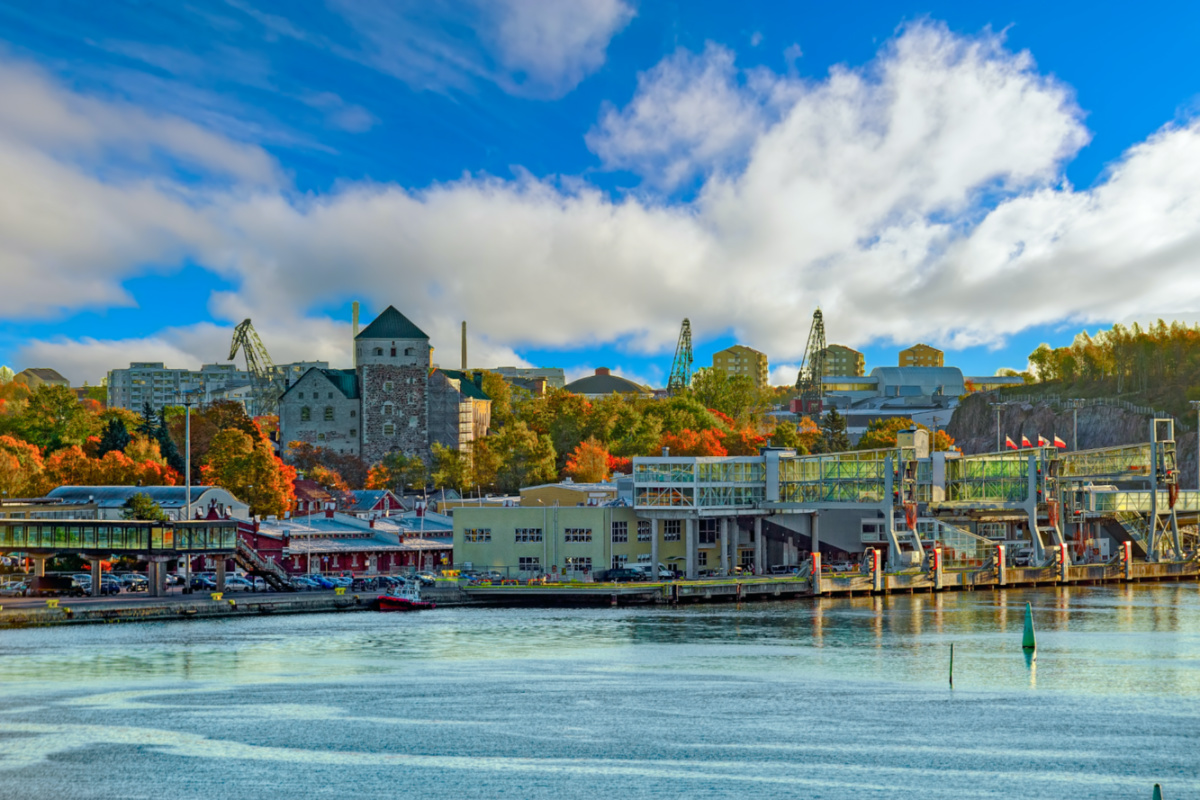
Turku skyline. PICTURE: IgorSPb/iStockphoto.
Turku, straddling the Aura River which usually freezes in winter, traces its founding to 1229 when it was mentioned in a document by Pope Gregory IX.
A former Finnish capital, it is known for its granite castle and its cathedral with a 102-metre tall tower, both dating from the 13th century.
Guenard said Turku was especially innovative by stressing that creating a “circular economy”, such as by recycling and eliminating waste, was a key goal of climate action and protecting biodiversity.
In a warehouse on the outskirts of the city, workers wearing breathing masks to protect against pollution sift through huge piles of waste textiles.
Finns discard an average of 13 kilograms of textiles a year and they have often ended up in landfills or incinerated, said Tuomas Alijoki of recycling firm Lounais-Suomen Jatehuolto Oy.
Here, low-quality textiles are shredded and recycled into products such as floor tiles, furniture padding or yoga mats.
Other items are sold by weight – in the shop that is part of the recycling plant, a pair of jeans costs about €3.
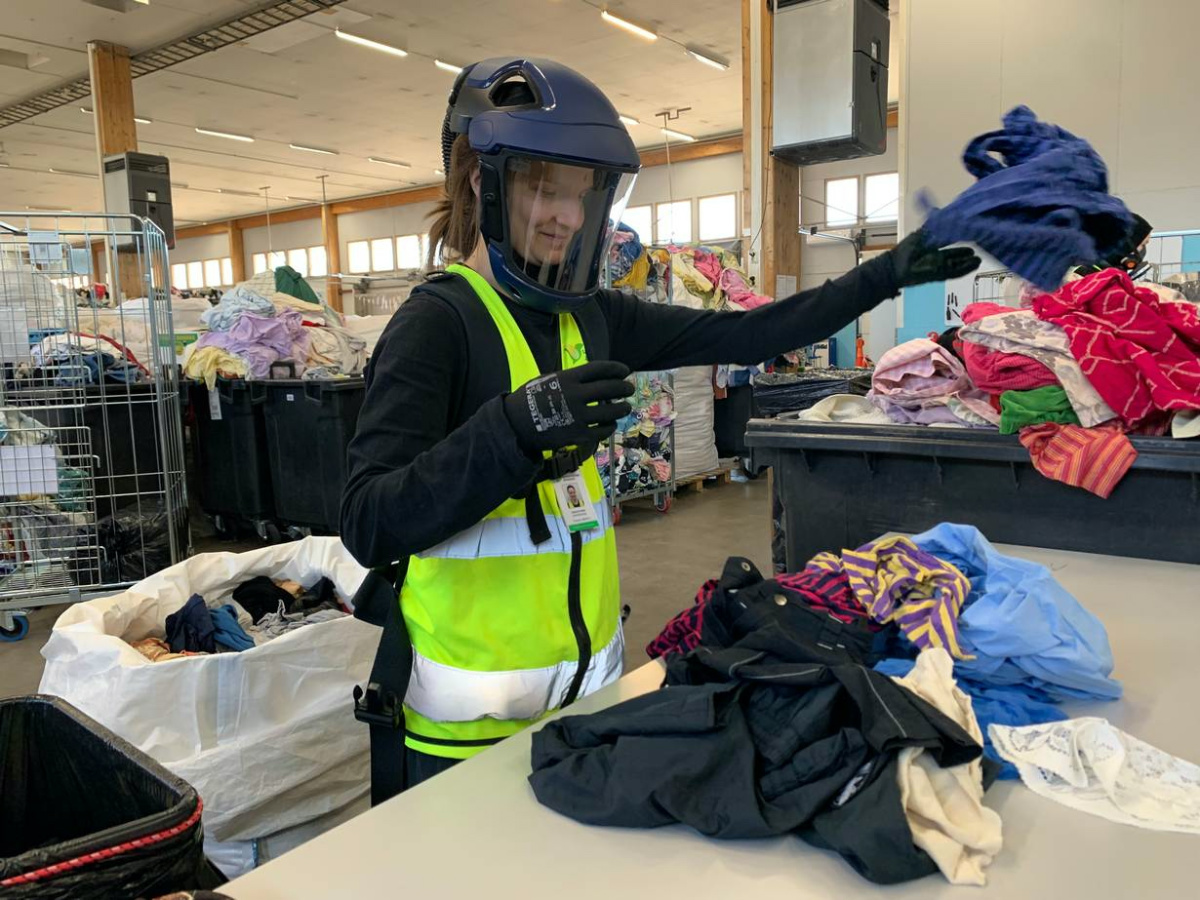
Wearing a breathing apparatus to keep out pollutants, Sallamari Salmi sorts textiles as part of a recycling campaign in Turku, Finland, on 26th April. PICTURE: Thomson Reuters Foundation/Alister Doyle
Matthew Baldwin, manager of the EU 100 Climate Neutral Cities project – which includes Turku on a list issued in late April, said cities often have more ambitious climate goals than governments, but little say in designing national policies.
Baldwin, who is also a deputy director-general at the European Commission in Brussels, said the 100 cities in the project – which also include Lisbon, Dublin, Sofia, Munich, Paris, Athens, Bucharest and Budapest – have “potential wiggle room” in meeting their goals.
Cities can usually only measure direct emissions within municipal boundaries such as energy used for heating, electricity generation, transport and construction.
They exclude, for instance, harder-to-count emissions such as from food, steel, concrete and other materials brought in from elsewhere.
We rely on our readers to fund Sight's work - become a financial supporter today!
For more information, head to our Subscriber's page.
In Finland, the Meyer Turku shipyard, for example, builds some of the world’s largest cruise ships with many materials produced elsewhere.
Overall, Turku’s climate neutrality pledge has slashed emissions monitored by the city to about 600,000 tonnes – roughly three tonnes for each inhabitant – from more than 1.2 million in 1990.
But total emissions per capita, counting everything from food to flights, in Turku are about seven tonnes.
To close the gap, Turku is encouraging citizens to shift lifestyles to comply with the toughest goal of the Paris Agreement to limit global warming to 1.5 degrees Celsius above pre-industrial times.
New student residential halls have solar panels on the roof and state-of-the-art insulation. Students get five-minute sandglass timers to use when they have a shower to save water.
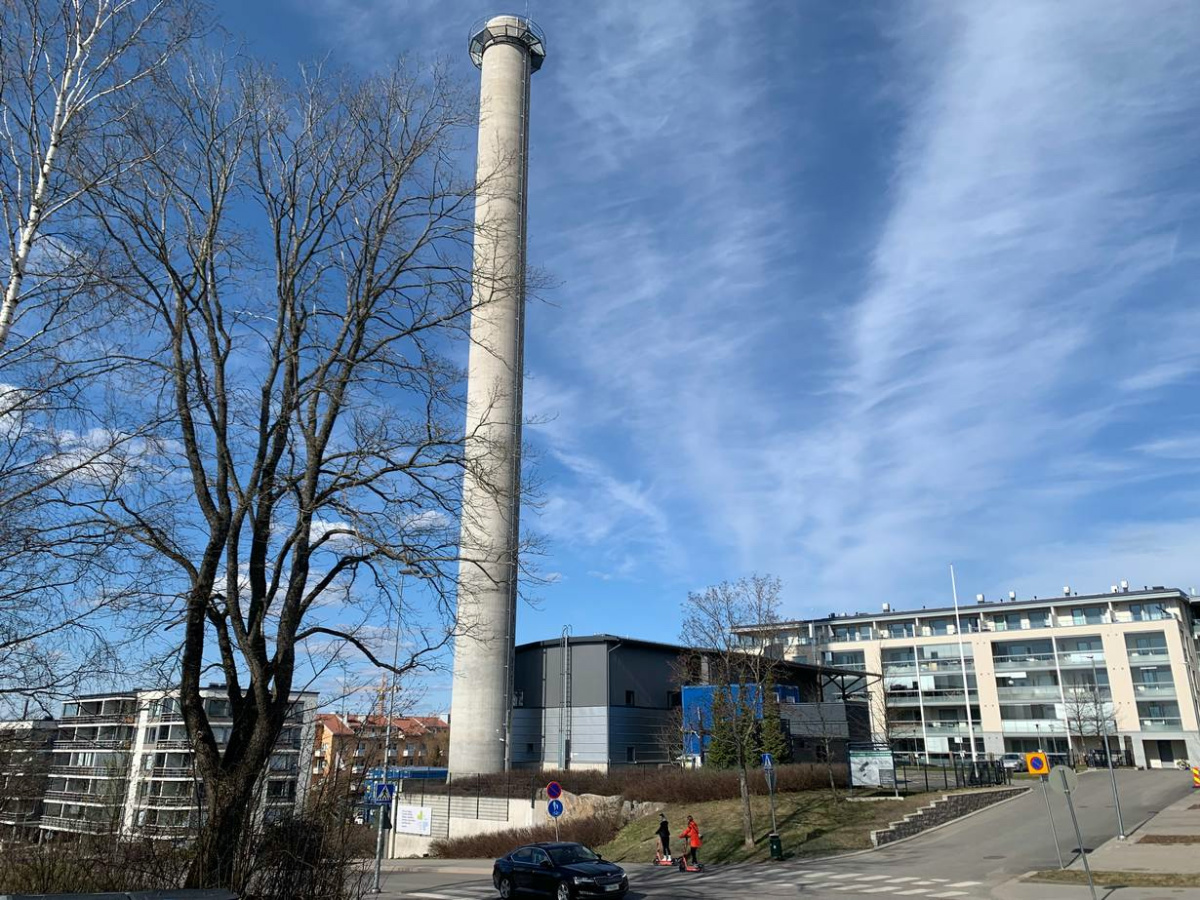
An outdoor view of the Kakola wastewater plant in Turku, Finland, on 25th April. PICTURE: Thomson Reuters Foundation/Alister Doyle
Big challenges for Turku include reducing fossil fuel emissions from transport in a region where many depend on cars.
Vidal Fey, a Finnish-German biologist and Turku resident, criticised the construction of an underground car park in the city centre.
“It encourages people to drive to the city rather than bike or take the bus,” he said, sitting on a bench by the Aura River.
We rely on our readers to fund Sight's work - become a financial supporter today!
For more information, head to our Subscriber's page.
Back at the wastewater plant, workers are proud of the purity of the water now flowing into the Baltic Sea, curbing pollution that in the past has caused toxic blooms of algae.
Jouko Tuomi, an engineer at the water treatment plant, points to a slogan on a company T-shirt: “Only the setting sun goes down untreated into the Baltic Sea.”





